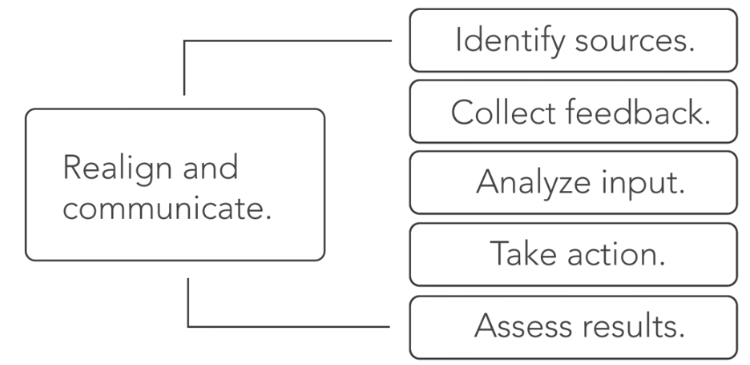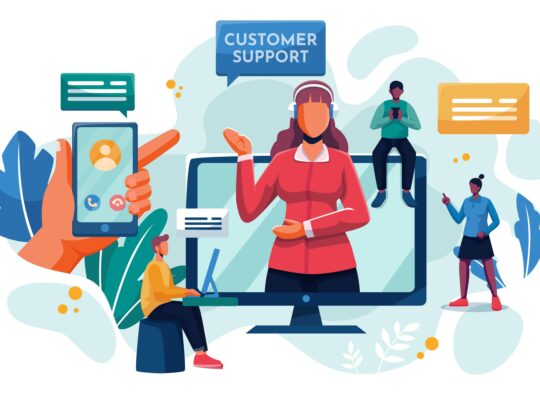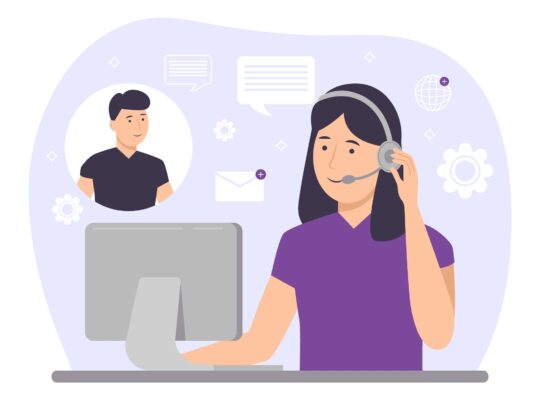| Managing Customer Feedback | ||
| Instructor: Brad Cleveland | ||
| Released: 8/12/2018 | Course Details 54m Beginner & Intermediate | |
| Skills Covered Feedback Management | Course Link | |
| Professional Certifications and Continuing Education Units (CEUs) National Association of State Boards of Accountancy (NASABA) – CPE: 2 | ||
| Your customers have so much they want to tell you. When you put their insights to good use, everyone wins. That’s why every organization—regardless of size or industry—needs an effective approach to managing customer feedback. This course provides a step-by-step approach to collecting, tracking, and using customer feedback, complete with examples that show what other companies are doing in this important space. Brad Cleveland, an expert in customer experience and customer service, explains how to respond to positive and negative feedback, track trends over time, and put feedback into action. Using examples from some of the world’s leading organizations, Brad shows how to harness customer feedback to improve the experience customers have and to drive improvements to your products, services, and processes. Learning objectives – Identify why tracking and using customer feedback is so important to improving customer service. – Determine the characteristics of effective customer feedback management. – Recognize how to manage customer feedback in real time. – Examine effective methods to empower employees to act when attempting to address a customer’s issue. – Identify the different sources of customer feedback. – Discover effective ways to act on customer feedback. – Explore the best methods of assessing customer feedback. Source: LinkedIN Learning | ||
The Importance of Managing Customer Feedback
What is managing customer feedback?
Managing Customer Feedback
Process by which an organization collects, analyzes, and acts on customer feedback.
Tactical Perspective
Acting on feedback as it happens to solve problems or deliver personalized service.
Strategic Perspective
Collecting and analyzing feedback from many customers and looking for recurring problems and opportunities.
Why managing customer feedback is so important
- Word of mouth – many companies rely on referrals to increase their business
- The iceberg effect – only hear from a small percent of customers who encounter problems, sometimes only 5%. Often companies see a 20% drop in loyalty when not reporting problems to the organization.
- Guiding priorities – customers making the most noise, gets the most attention
- Empowering the organization – pinpoint quality problems, assist sales & marketing, early warning systems to reduce risks, and also identify competitive strengths and weaknesses.
Establishing your goals
- Customer satisfaction and loyalty
- Positive word of mouth
- Organization-wide improvements
- Efficiency
- Employee satisfaction
- Financial returns – boost revenue, increase market share
Avoiding pitfalls
Pitfalls
- Not having a structured approach
- Building an overly complicated approach
- Focusing only on problems or negative feedback
- Having multiple owners of customer feedback
- Having a “survey mentality”
- Not acting on customer feedback
Characteristics of an effective approach
Self-Assessment: Managing Customer Feedback
- Supportive culture
- Feedback from many sources
- Employee training
- Responsive in real time
- Tools and systems
- Central repository
- Project owner
- Action orientation
- Strategic approach
- Ongoing feedback
Managing Customer Feedback As It Happens
Managing customer feedback in real time
- Identify feedback sources.
- Train employees.
- Install supporting technology.
- Forecast and plan the workload.
- Adjust and improve.
Empowering individuals to act
- Provide training and tools.
- Give employees decision-making power.
- Establish objectives.
Responding to positive or general feedback
- Respond in a timely manner.
- Say thank you.
- Be specific.
- Represent your brand’s voice.
Successfully handling negative feedback
- Respond in a timely manner.
- Thank the customer.
- Apologize.
- Resolve the issue.
- Document.
The Strategic Approach to Managing Customer Feedback
A strategic framework for managing customer feedback

Sources of customer feedback
Structured feedback
- Surveys
- Focus groups
- Welcome or exit interviews
- Operational data
Unstructured Feedback
- Customer interactions
- Social posts
- Employee observations
- Ratings sites
Collecting feedback
Capturing Data
- Touchpoint – after talking with service or during transaction?
- Objective – what was the issue for the touchpoint?
- Experience – was the issue resolved and on-time?
- Impact – emotional impact of the experience
Analyzing input
Categorized by type using tags allows you to sort the feedback.
Type of Feedback
- Price
- New feature request
- Usability
- Bug
Cause and Effect Matrix
Diagram that compares all the inputs influencing an experience and organizes them in priority order.
Customer Journey Map
Visual depiction of key interactions at different touchpoints that a customer experiences with your business, based on feedback received.
Acting on feedback
- Safety – should be top priority
- Frequency – how often does the issue occur?
- Magnitude
- Innovation – customers wish list
- Timing – some issues impact customers but can wait
- Customer Segment – loyal customers
- Prevention – resolving problems before they happen
- Brand Impact – brand protection is important
Assessing results
- Establish an overall metric
- NPS – would you recommend us to others?
- Customer Satisfaction (CSAT) – how would you rate your experience?
- Create surveys for specific reasons.
- Customer Effort Score – to what extent do you agree with the following statement?
- Identify operational data.
- Observe customer behavior.
Innovating and realigning
- Have you identified all the sources of feedback?
- How is customer feedback going?
- Would it make sense to experiment with different ways to analyze data?
- Are we focusing on the right priorities?
- Are the metrics helpful?
| Remember! To experience the full benefit of this guide, I highly recommend you watch the full training session. |






